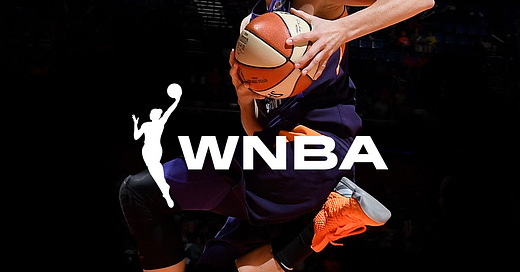WNBA's Historic Growth in 2024: A Season to Remember
The WNBA has experienced historic growth in 2024, marking a pivotal year for the league. This season recorded the highest viewership for a regular season in 24 years, reflecting a remarkable surge in interest among fans. Attendance figures soared as well, reaching their highest levels in 22 years.
In addition to traditional viewership and attendance, the WNBA set new records for digital consumption, indicating a substantial increase in fans engaging with the league online. Merchandise sales also experienced a significant uptick, further demonstrating the league's expanding influence and popularity.
2024 Highlights
Highest total attendance in 22 years (2,353,735), up 48% from last season. The league’s 154 sellouts marked a 242% increase from last season (45).
AT&T WNBA All-Star Game 2024 had a record of nearly 10 million fan votes, a +538% increase compared to 2023.
All-time record of more than 54 million unique viewers across ABC, CBS, ESPN, ESPN2, ION and NBA TV. A record 22 regular-season game telecasts averaged at least 1 million viewers. The season was consumed for a record 136.29 million hours across all national networks.
Merchandise sales both online at WNBAStore.com and the flagship location in New York City were up a combined 601% from 2023. In addition, merchandise sales at Dick’s Sporting Goods increased by 233% compared to last season.
Expansion Plans: WNBA Added Three New Franchises - (Portland , Toronto, Bay Area).
More Here.. WNBA Growth Stats
‘If You Want Us Here, Pay Us’
As the WNBA experiences its highest viewership in over two decades, players are turning their attention to a long-standing issue: fair compensation. In the 2024 regular season, nationally televised WNBA games averaged 657,000 viewers, the largest audience in 24 years. However, this spike in visibility hasn’t yet translated to substantial financial improvements for the players. The league's prioritization rule, which requires players to prioritize the WNBA over lucrative overseas contracts, has also drawn criticism. French star Gabby Williams, who rejoined the Seattle Storm late in the season, voiced her frustrations with the current system, particularly the lack of compensation that would incentivize players to remain in the WNBA year-round.
“The WNBA, you know, if you want us to be here, you have to pay us more. It’s business, it’s how it works,” Williams said. She also critiqued the league’s failure to deliver on promises of marketing agreements that could potentially boost player incomes. Williams made just $23,491 during her brief stint with the Storm this season, a stark reminder of the challenges WNBA players face financially, even as the league grows in viewership and popularity.
Calls for Revenue Sharing
The call for revenue sharing in the WNBA highlights a crucial moment in the league's evolution. As players like Napheesa Collier articulate, the demand isn't for parity with the NBA but for a more equitable distribution of the league's growing revenue.
As the League continues to soar in popularity and demand, a crucial issue continues to loom on the horizon: the need for equitable revenue sharing. Despite record-breaking viewership and heightened fan engagement, the league's financial structure remains a significant barrier to fair compensation for its players. With only about 40% of total revenue retained by the WNBA and less than
10% allocated to its athletes, the existing compensation model starkly contrasts with the rising expectations of players.
While recent collective bargaining agreements have produced some of the highest contracts in league history, players are increasingly vocal about their need for a more balanced revenue-sharing model. This ongoing disparity not only jeopardizes athletes' financial security but also hinders the league's potential to attract and retain top talent.
As the WNBA experiences continued growth fueled by rising viewership and engagement, the call for fair compensation has never been more urgent. Players are stepping up to advocate for themselves, emphasizing that their contributions and the league's success deserve recognition through equitable pay. With upcoming collective bargaining negotiations on the horizon, the stakes are high for athletes fighting for a financial structure that accurately reflects their value and the league's promising future. This pivotal moment could reshape the landscape of women's professional sports, making equity in compensation a central focus of the conversation.





